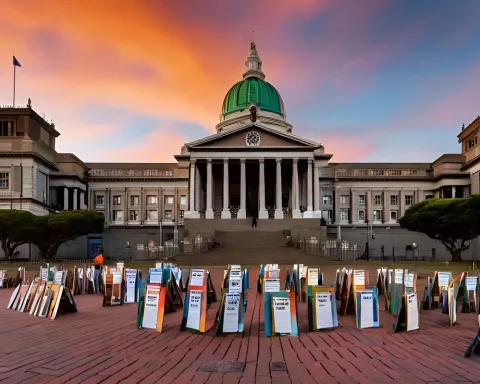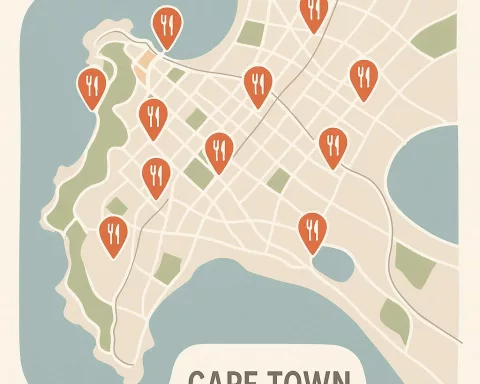That Boy Has No Shoes is a powerful play that brings South Africa’s painful past of Apartheid to life in a unique way. Instead of human actors, everyday objects like an axe and a camera tell their stories, allowing the audience to feel the weight of history. Created by Lara van Huyssteen, the play aims to spark empathy and understanding, especially among those who may not know much about this dark chapter. After its success in London, it now returns to Cape Town, not just to tell a story but also to inspire change by providing shoes for children in need. This emotional journey reminds us to remember the past as we look forward to a better future.
What is That Boy Has No Shoes About?
That Boy Has No Shoes is a theatrical production that explores the legacy of Apartheid through innovative storytelling. Using inanimate objects as narrators, it emotionalizes historical events and promotes empathy, ensuring that the stories of South Africa’s past resonate with present audiences.
In a time when history often fades into obscurity, That Boy Has No Shoes stands out as a poignant theatrical experience that connects the past with the present. Following its successful run in London, this innovative production now brings its powerful narrative to the stages of Cape Town, South Africa. The play presents an emotional journey through the grim landscape of Apartheid, narrated by unusual storytellers—an axe, an eviction notice, a passbook, and a camera.
The Spark That Ignited a Powerful Story
The idea for That Boy Has No Shoes was born from a significant realization by its creator and performer, Lara van Huyssteen. Moving to London in 2018 to study theatre and performance, she found that her peers were largely unaware of the brutal legacy of Apartheid. This lack of historical awareness stirred a sense of duty within her, compelling her to create a narrative that would highlight this dark chapter of history.
Originally starting as a university project, the play quickly evolved into a compelling piece of theatre. Van Huyssteen’s drive to bring this story to life was fueled by a deep sense of responsibility—not merely to recount historical facts, but to evoke a visceral response from her audience. Her commitment to this narrative showcases her dedication to ensuring that the stories of Apartheid are not forgotten.
A Unique Approach to Storytelling
What sets That Boy Has No Shoes apart is its innovative use of inanimate objects as narrators. Through the voices of an axe, an eviction notice, a passbook, and a camera, the play takes the audience on a journey through pivotal events that shaped South Africa‘s struggle for democracy. This creative method combines verbatim text with narrative storytelling, allowing each object to recount the atrocities it silently witnessed. The play addresses significant moments such as riots, forced removals, and protests, offering a vivid portrayal of the past’s impact on present-day South Africa.
In an interview with Adrienne Bredeveldt for Cape {town} Etc, van Huyssteen discussed the creative process behind the production. She expressed her initial surprise at the limited understanding of Apartheid history among her London peers. For many born after the regime’s end, Apartheid seemed like a distant, almost abstract event. Despite the efforts of the UK’s Anti-Apartheid Movement to raise awareness, incorporating the histories of 56 Commonwealth countries into a single curriculum remains a challenge. Van Huyssteen was particularly struck by the sparse coverage of South Africa’s history within UK education, despite its ties to the Commonwealth.
Navigating Complex Narratives
Choosing to bring the play to life in London, rather than South Africa, introduced another layer of complexity. As a white Afrikaner born after democracy was established, van Huyssteen felt a need to approach the subject with great care. The pandemic further influenced the production, pushing her to explore how technology could bridge the gap between absent voices and the present performance space. Collaborating with Stellenbosch University drama students, she recorded monologues that allowed the inanimate objects to “speak” on stage, blending real and fictional characters seamlessly.
Rather than offering a comprehensive history lesson, the performance aims to evoke deep emotional responses. Van Huyssteen underscores the importance of empathy in understanding the human stories behind historical events. Inspired by Maya Angelou’s belief that people remember how you made them feel, she crafted a show designed to leave a lasting emotional impact. She hopes this emotional connection will foster a deeper understanding and remembrance of South Africa’s painful journey to democracy.
Beyond the Stage: Impact and Legacy
The acclaim for That Boy Has No Shoes extends beyond its innovative storytelling. Critics have praised the production for its powerful narrative and van Huyssteen’s ability to intertwine historical events with emotional depth. The success of the show in London set the stage for its return to South Africa, where it promises to resonate even more deeply.
Van Huyssteen’s dedication to the project goes beyond the theatre. She plans to use any profits from the show to buy shoes for children at two primary schools in her hometown of George, South Africa. These schools serve children from the township, making this gesture a meaningful way to give back to her community. This commitment highlights the deeply personal nature of the project and van Huyssteen’s desire to create positive change through her art.
Bringing That Boy Has No Shoes to Cape Town provides South African audiences with a fresh perspective on their history. The play serves as a powerful reminder of Apartheid’s enduring impacts, urging viewers to remember the past to shape a better future. Through the voices of inanimate objects, van Huyssteen breathes life into the memories of oppression and resistance, ensuring that the stories of those who lived through these tumultuous times are not forgotten.
A Lasting Emotional Connection
As the lights dim and the performance begins, audiences are transported into a world where the echoes of history resonate through the present. That Boy Has No Shoes stands as a testament to the power of storytelling, offering a poignant exploration of South Africa’s past and its ongoing legacy.
Van Huyssteen’s work underscores the importance of empathy and emotional engagement in understanding historical events. By focusing on personal stories and the emotions they evoke, the play creates a lasting impact on its audience. This approach not only educates but also fosters a deeper connection to the human experiences behind historical facts.
In conclusion, That Boy Has No Shoes is more than just a play; it is a powerful narrative that bridges the gap between history and the present. Through innovative storytelling and a deep commitment to empathy, Lara van Huyssteen brings to life the stories of Apartheid, ensuring they are remembered and understood. As the play continues to captivate audiences, it stands as a reminder of the importance of remembering the past to shape a better future.
FAQ for That Boy Has No Shoes
What is That Boy Has No Shoes about?
That Boy Has No Shoes is a theatrical production that explores the legacy of Apartheid in South Africa through innovative storytelling. The play uses inanimate objects, such as an axe and a camera, as narrators to convey the emotional weight of historical events, fostering empathy and understanding among audiences.
Who created That Boy Has No Shoes?
The play was created by Lara van Huyssteen, who was inspired by her experiences studying theatre in London. Her realization that many of her peers lacked awareness of Apartheid history motivated her to craft a narrative that highlights the impact of this dark chapter in South Africa’s past.
How does the play convey its message?
The unique storytelling method in That Boy Has No Shoes involves the voices of everyday objects, which recount the atrocities they witnessed during Apartheid. This approach combines verbatim text with narrative storytelling, allowing the audience to emotionally engage with pivotal moments in South Africa’s history, such as riots and forced removals.
What impact does the play aim to have?
Beyond educating audiences about Apartheid, That Boy Has No Shoes aims to inspire change. Profits from the production will be used to buy shoes for children in need at primary schools in George, South Africa. This commitment reflects van Huyssteen’s desire to give back to her community and create a positive legacy through her art.
Where has That Boy Has No Shoes been performed?
After a successful run in London, That Boy Has No Shoes is returning to Cape Town, South Africa. The production promises to resonate deeply with South African audiences, offering a fresh perspective on their history and encouraging them to remember the past as they look toward a better future.
Why is the play significant today?
That Boy Has No Shoes stands out as a poignant theatrical experience that connects historical events with contemporary issues. In a time when the lessons of the past can fade into obscurity, the play serves as a reminder of Apartheid’s enduring impacts and the importance of empathy in understanding human experiences behind historical facts.












